Chiffon is a light, translucent fabric. It was brought from China many centuries ago. Since then, it has won the attention of fashionistas. It is used to make clothes and accessories. The material does not restrict movement, makes things light. Care depends on the composition of the fabric. You can learn more about it from the article.
What is chiffon
The ancient Chinese already knew what chiffon was. It is a fabric created by interlacing thin silk threads. Initially, the cost of products made from it was high due to manual work and the difficulty of obtaining threads. They are distinguished by their rough, sandy surface and lightness. Despite the airiness and thinness, the material lasts a long time. To extend the life of the material, you need to carefully care for it.
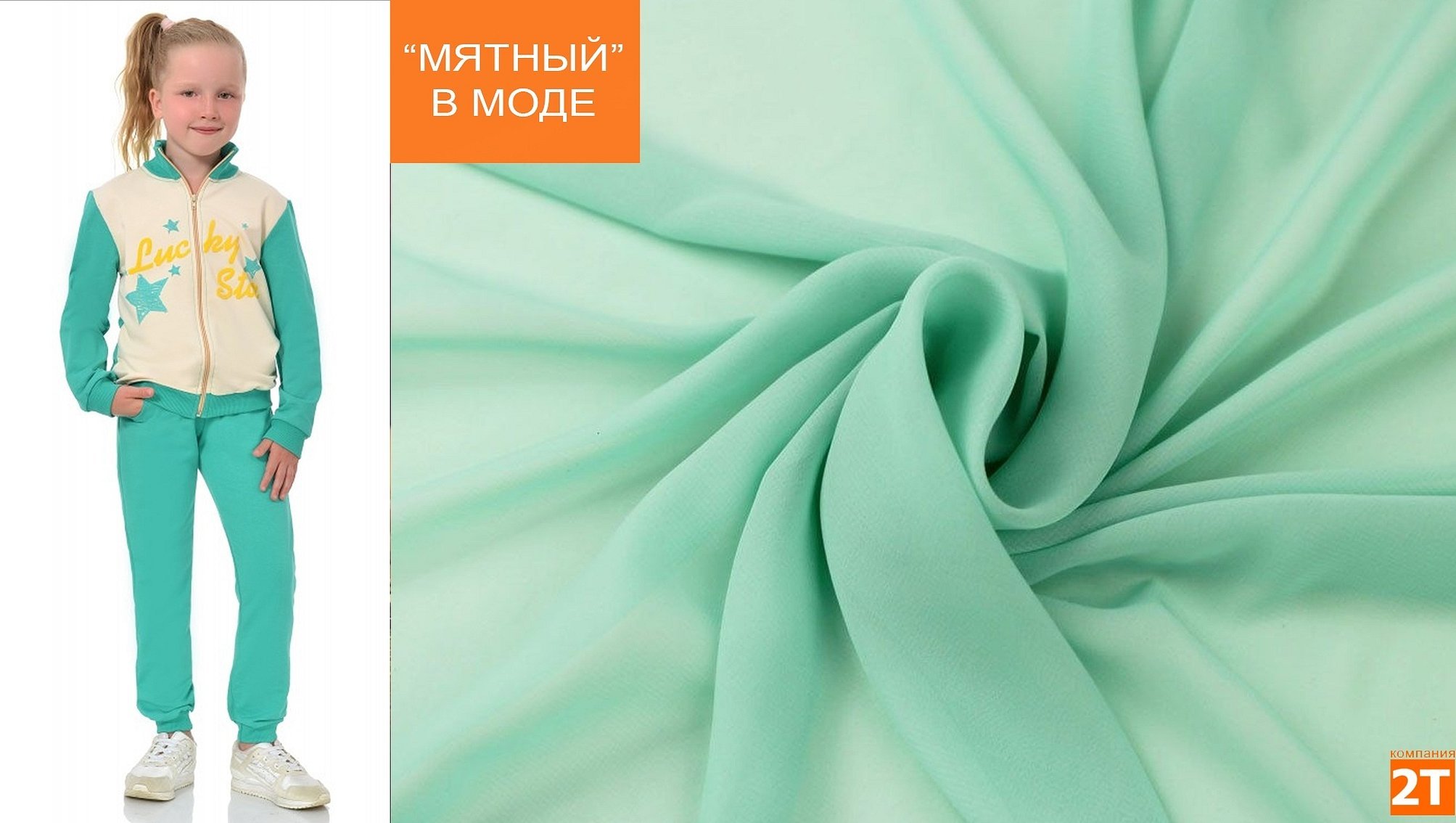
Today, natural and synthetic fibers are used in production. This creates a noticeable difference in the prices of chiffon products. Silk will cost more. You can read more about what chiffon fabric is below.
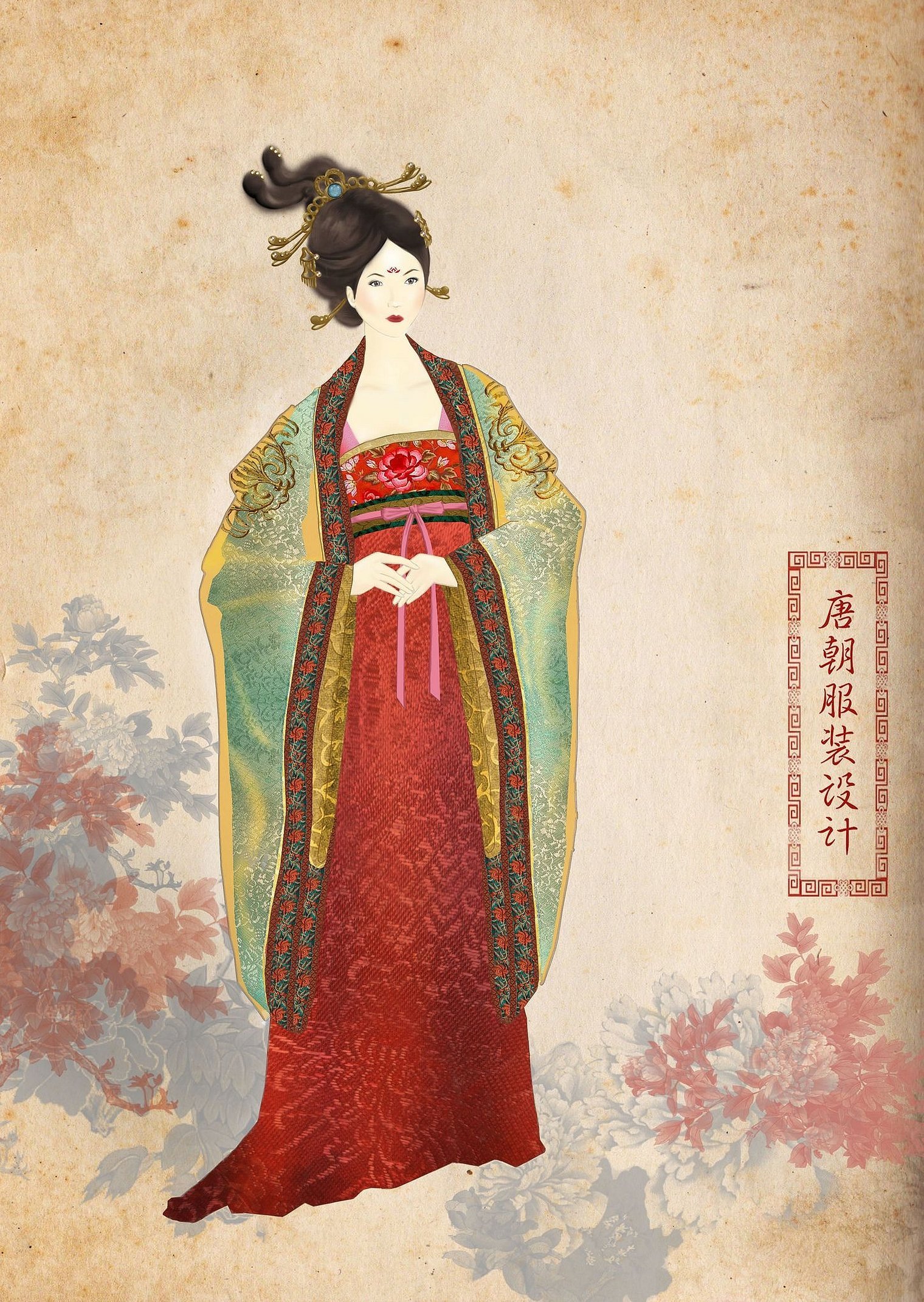
History of appearance
Chiffon is a fabric that was previously made by hand from silk threads. Its history began in Ancient China several thousand years ago. It was a quality material. Wealthy people could afford things made from it. It got beyond its homeland in the 18th century. It got its name from the French word "Chiffon", which translates as "rag". The other name for chiffon now depends on the threads it contains and the way they are interwoven.
In the 1930s, lightweight fabric began to be replaced by nylon and polyester. It began to be made from artificial materials. This affected the cost, as a result of which the fabric became more accessible.
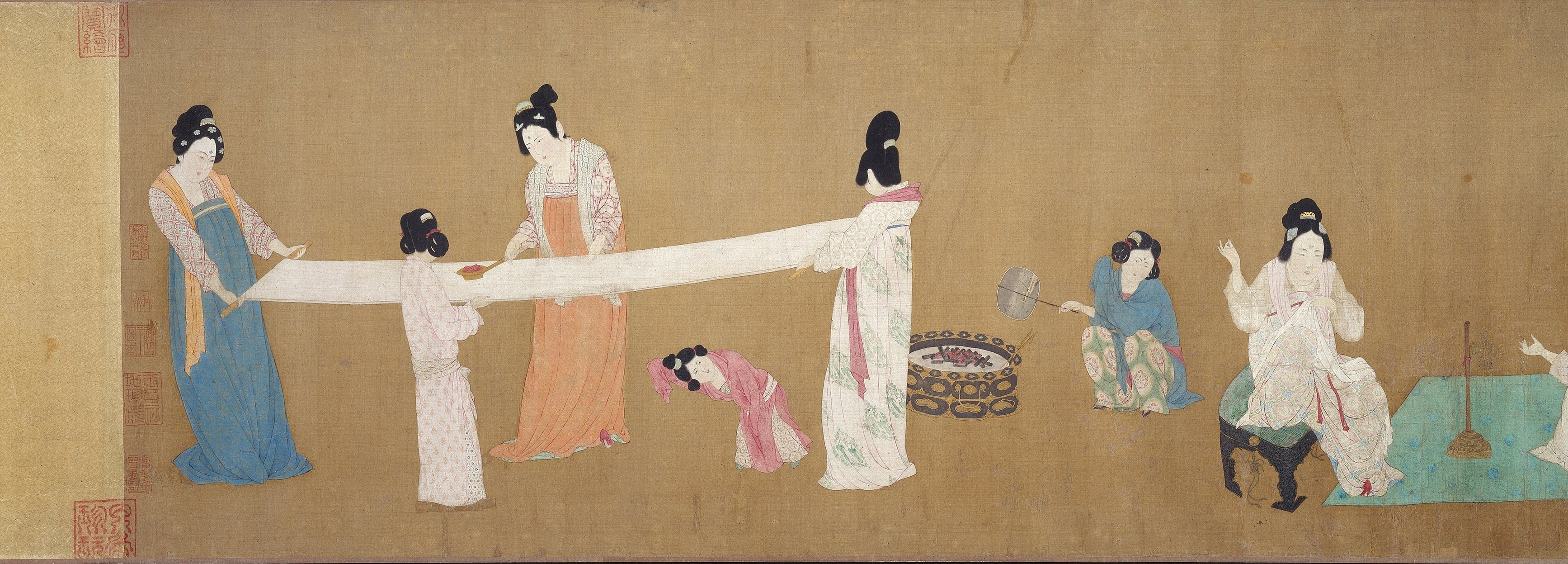
Description and composition
Modern material is produced in different ways. The composition may vary. The manufacturer is obliged to provide a brief description of the fabric on the label. It will help determine what difficulties you may encounter when buying a thing and how to care for it.
Please note! Chiffon can contain various fibers. Its quality depends on this. To make the fabric strong and reliable, the manufacturer combines the components. All information about this should be available to the buyer.
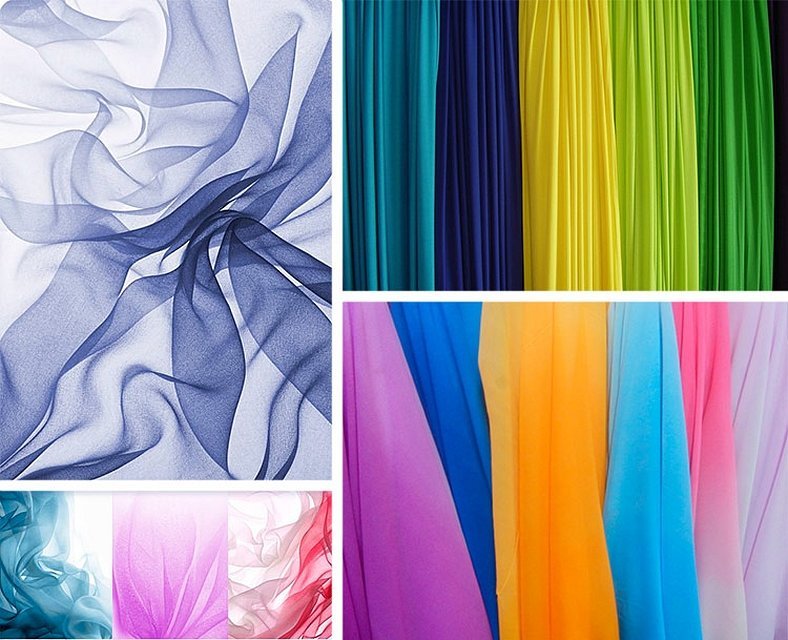
The composition of chiffon fabric includes the following threads:
- Cotton - a natural material used in production, grown specifically for the creation of fabrics. The soft fiber is sorted and processed to obtain a thin but strong thread;
- viscose is not a natural thread. It is made from cellulose and a solution of sodium. It is strong, but soft, suitable for sewing comfortable, pleasant to the body things;
- silk is a natural raw material for obtaining expensive fabric. It looks impressive, shimmers in the light. Silk threads are obtained using the silkworm;
- Polyester is a fiber that was the first to be included in the composition of materials other than silk in 1938. It is so strong that even ropes are made from it;
- Polyamide, like polyester, is a dense material used in the production of not only fabrics.
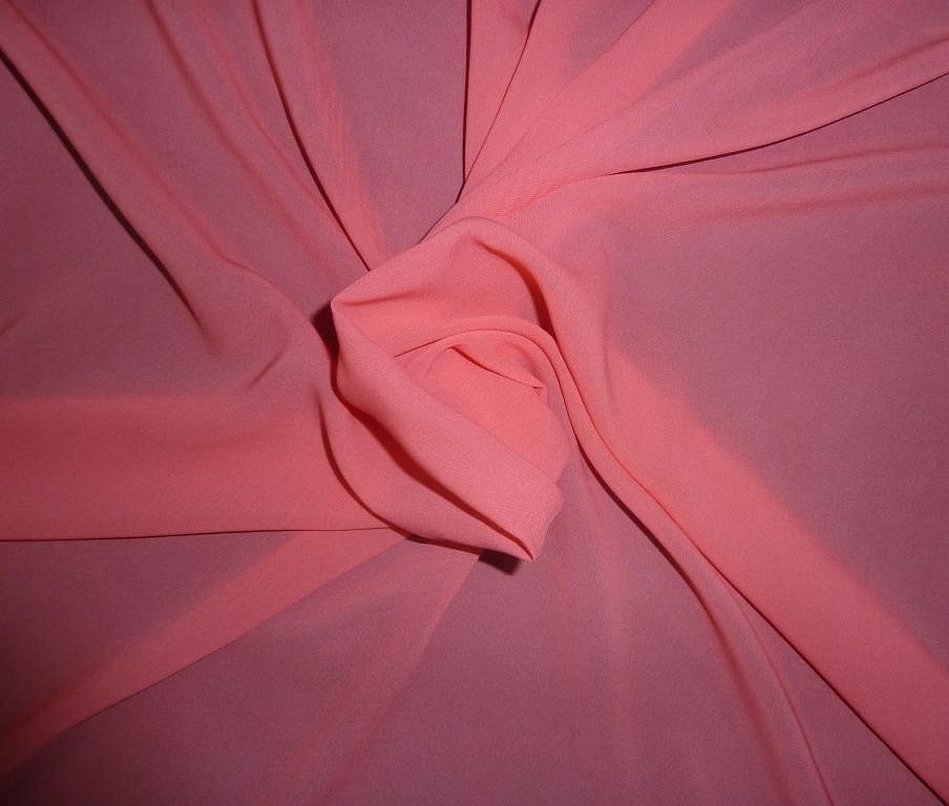
What types of chiffon are there according to the type of weaving:
- satin - a smooth, glossy, shiny material. The threads are woven into a vertical relief;
- jacquard - a fabric on which large patterns can be seen. It looks like embroidery;
- crepe chiffon is the thinnest fabric, the threads are tightly twisted in a special alternation. Crepe feels rough and sandy to the touch;
- chameleon can be distinguished by its bright iridescent colors;
- pearl chiffon got its name due to its iridescent effect, reminiscent of mother-of-pearl;
- Nylon chiffon is characterized by strength and density. It is also called crushed chiffon;
- double-sided chiffon - a two-layer fabric that can consist of two contrasting parts;
- Lurex fabric is produced with the addition of metallized threads.

Transparency
Transparency depends on the threads used in the production of the fabric. This affects the use of the material and the features of the clothes made from it. Satin is denser and shinier. Jacquard is also not very transparent. Sometimes they make chiffon capes that are almost transparent. At the same time, the quality and strength of the fabric is not lost.
Important! Dense, strong chiffon contains unnatural threads.
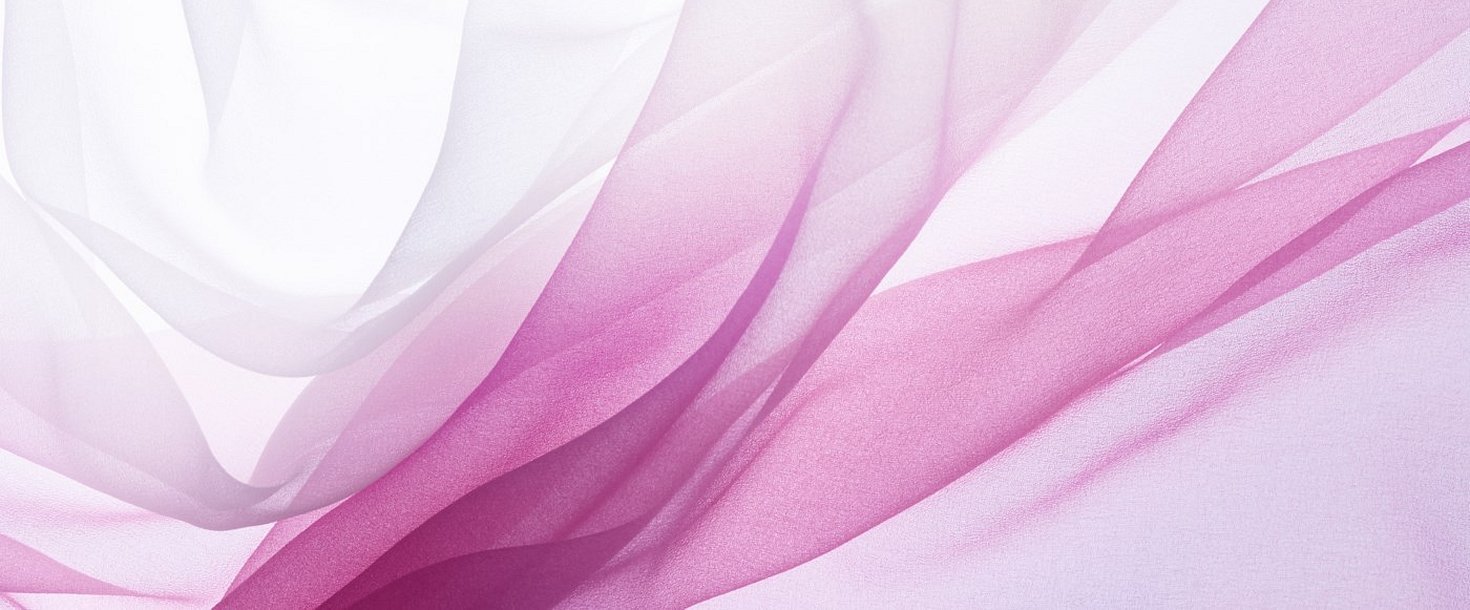
Natural material or synthetic
Chiffon airy fabric was originally made of silk, for naturalness you had to pay a lot. When unnatural fibers were included in the composition, the price fell. Comfort and wear life depend on whether the fabric is natural or synthetic.
Chiffon, which has a natural composition, is made in modern production from silk and cotton fabrics. At the same time, the percentage of real silk material on the market is small. Despite the airiness and lightness, natural chiffon clothing is durable. It is distinguished by a pleasant touch to the body. You can recognize it among other materials by its natural shine.
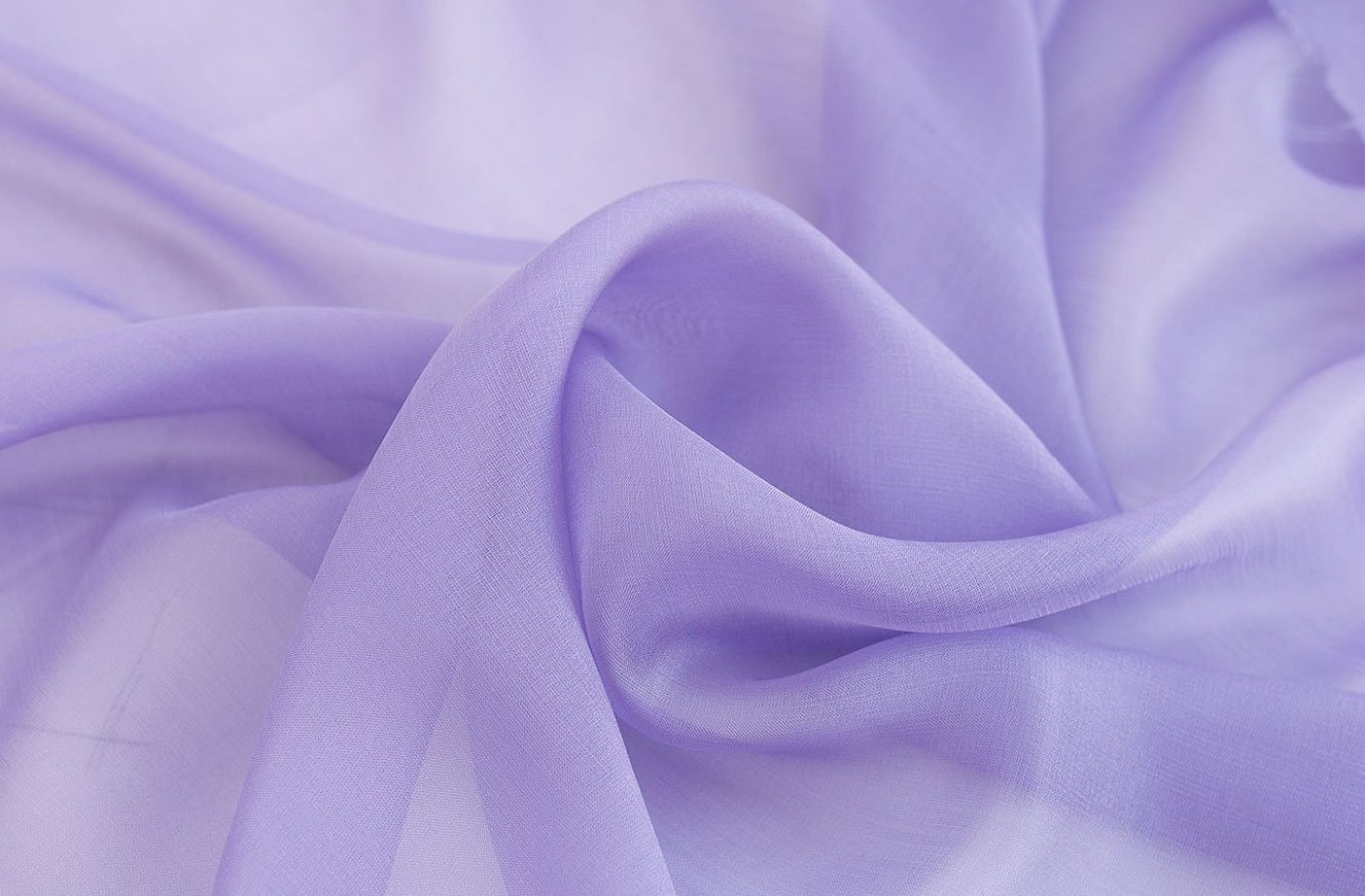
Important! Natural fabric made from silk threads has a natural cross-section, shine, and reflects light.
If cotton fabric is used in production, there is no cross-section, the shine disappears and dullness appears. It is easy to distinguish from synthetics by touch when touching. You can feel softness and lightness. The clothes do not restrict movements, but repeat them. At the same time, cotton fabric is not so soft. A noticeable difference from artificial material is in the price: silk fabric will cost from 1000 rubles per 1 m*.
Artificial viscose chiffon is denser, but retains its softness. Synthetics are rough, hard to the touch. When worn for a long time at high temperatures, discomfort from touch occurs. This chiffon contains nylon and polyester. The appearance retains its attractiveness. The only advantage over natural fabric is its low price and availability.
The choice between natural and artificial chiffon depends on financial means. This is the only obstacle before buying silk or cotton fabric. To reduce the price but maintain acceptable quality, manufacturers combine natural and artificial threads.
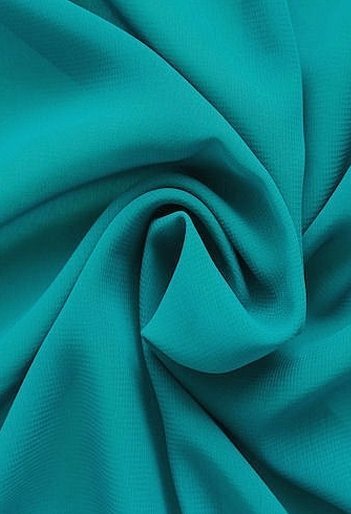
Scope of application
Chiffon is used not only in sewing clothes. The beauty and quality of the fabric was appreciated by K. Chanel. Since then, the airy material has been found not only on dresses. The ability to add charm popularized it in other areas.
Where the fabric is used:
- when sewing clothes;
- in the production of curtains and other decorative elements;
- for creating jewelry.

What is sewn from chiffon
Chiffon is a fabric that is used to sew clothes of any type. The most popular item in the wardrobe of girls made of it is a blouse. This is a trend for all times. If you choose the right image, it looks feminine, airy. An ideal option for the summer, when you need to attend an official event. Natural material will be pleasant to the body, will not create discomfort at high temperatures, will look rich and sophisticated.
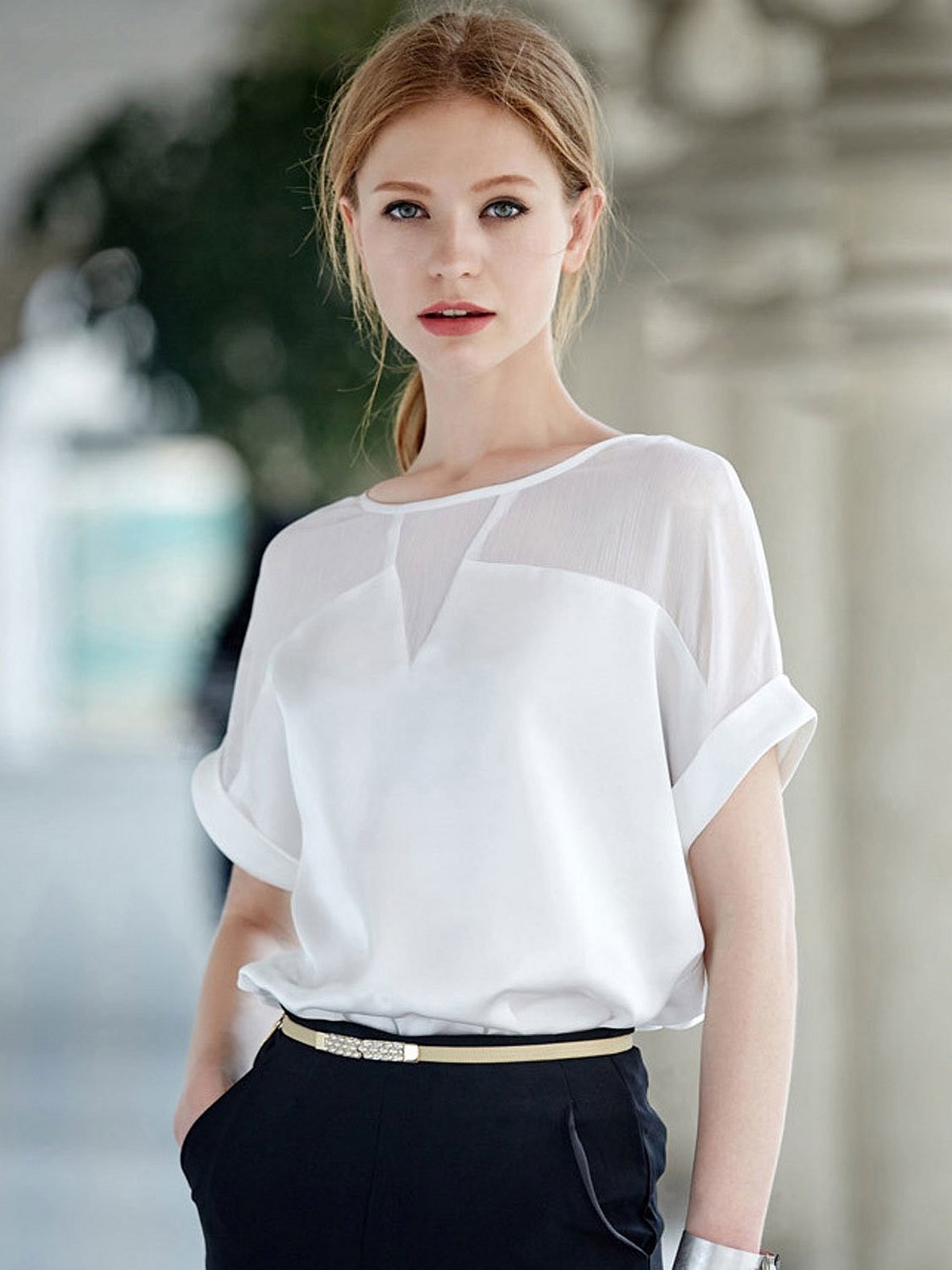
A chiffon dress can be suitable for everyday wear or for an important event. Transparency and lightness add femininity and tenderness to the image. Famous designers try not to pass by and often include one silk summer dress in their collections. The variety of options allows you to create a strict or flirty image.
Less often, a girl's wardrobe will contain a cardigan or vest made of flowing fabric. They help create an original, laconic image. Scarves made of silk or other chiffon are used with formal or other clothing, but always complement.
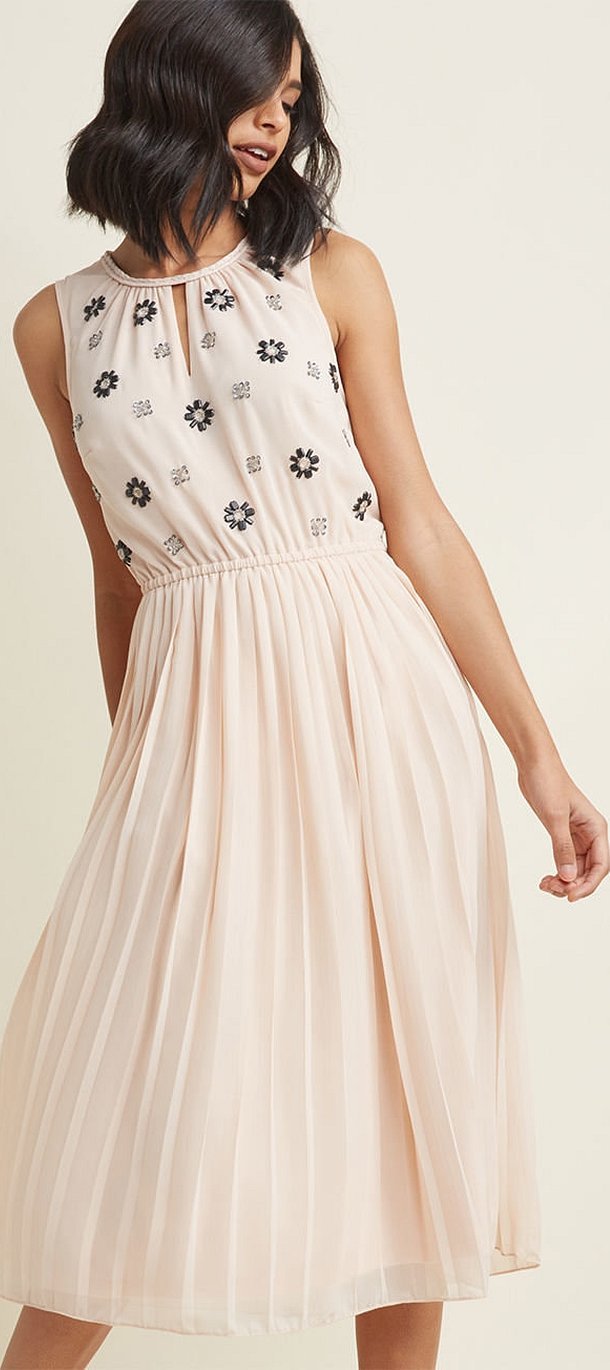
How to sew from chiffon
It is recommended that experienced seamstresses make dresses or scarves from chiffon, as the fabric is tricky and behaves unpredictably. It is difficult to work with lightweight fabric. But there are rules that will make creating clothes easier:
- you will have to use a lot of paper for cutting. To prevent the chiffon from slipping, put another, rougher and denser fabric underneath;
- after the cutting is done, it is advisable to leave the fabric for half an hour, then proceed to the next stage;
- To stabilize chiffon, use a spray for starching clothes or a fixing varnish. The substances are applied to the entire surface or only to the cuts;
- Do not use pins when working with chiffon;
- Notches spoil the appearance of fragile fabric. It is better to make marks with threads;
- the sewing needle should be new and sharp, this will save you from holes and snags;
- the length of the stitches should be minimal;
- do not machine-fasten at the beginning of the fabric. It is better to leave the threads and fasten them carefully yourself after sewing;
- You need to iron the chiffon along the seam frequently while sewing, and it is important to set the temperature correctly;
- It is recommended to use a French seam to give the product a professional look;
- the threads you use should be very thin, so the work will look neat;
- The edges of the product must be processed.
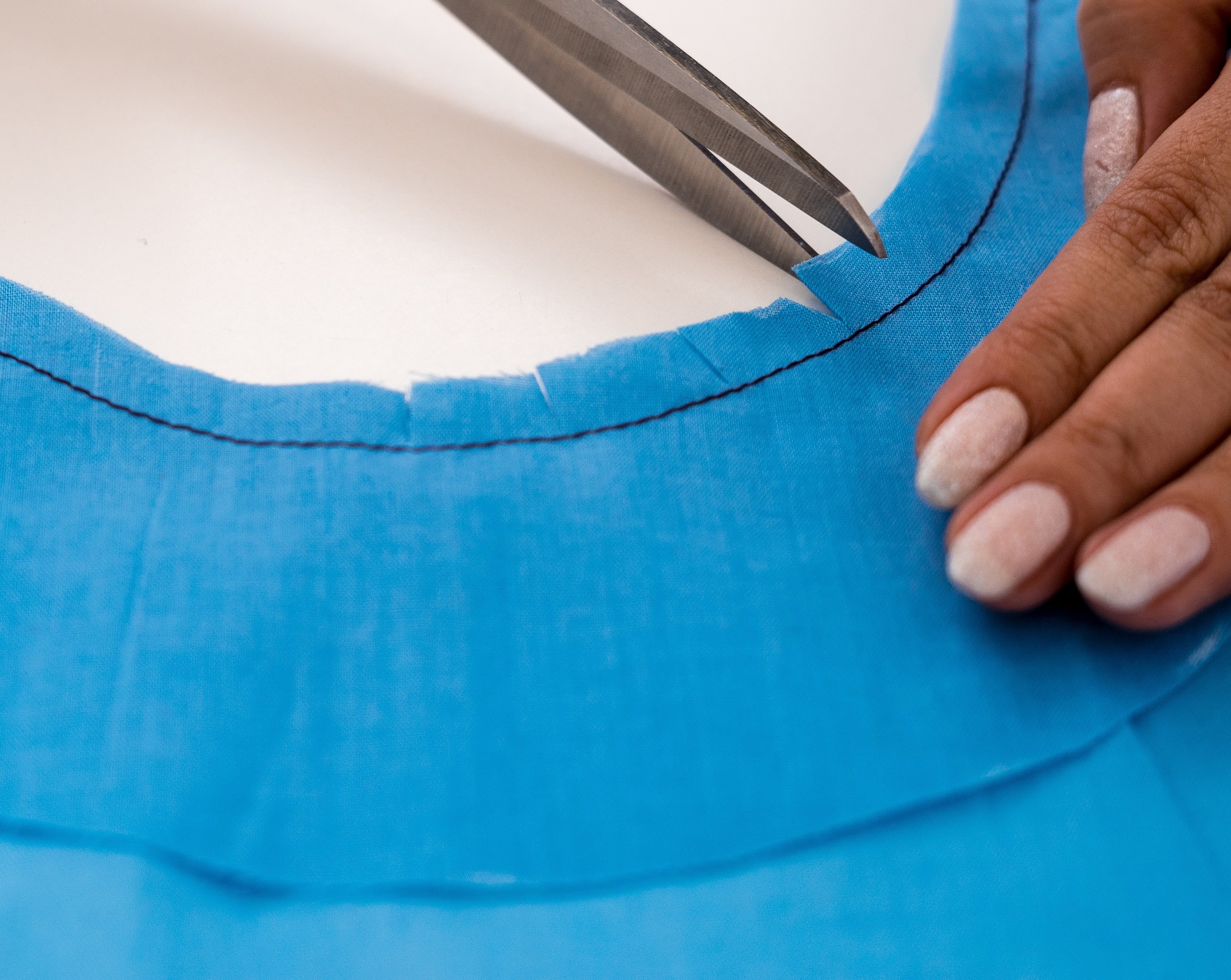
Important! Before applying spray or varnish, make sure it will not leave marks.

Caring for chiffon: how to wash and iron the material
Chiffon is a material that requires careful care and careful wearing. This not only extends its service life, but also gives it a fresh look. Especially many problems arise if the chiffon is white or another light color, you have to wash the product often. In addition, crumpled light chiffon after washing causes inconvenience when ironing clothes.
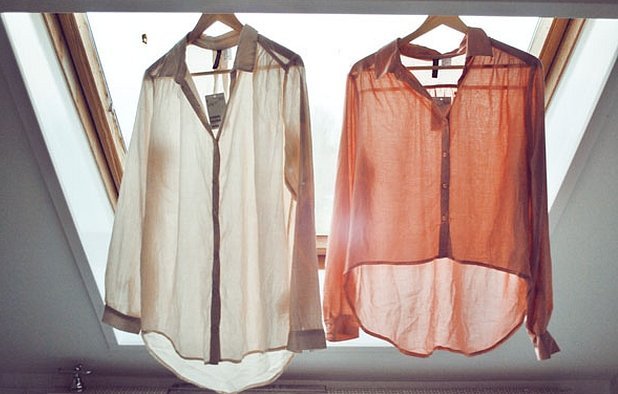
Rules for caring for chiffon:
- Care should begin with proper storage. It is better to leave the item on hangers. It is important that there is enough free space around it. Other things will leave creases that are difficult to smooth out. It is good if there is a wardrobe where you can leave small items separately. Dresses with decorations are put in a cover to preserve the appearance. This should also be done with skirts.
- The best way to clean a dress or blouse is to take it to the dry cleaner. If there is a letter P on the label, then you cannot wash the item yourself. This applies especially to decorated dresses. Before washing yourself, it is important to study the label indicating the required temperature.
- When washing at home, it is important to remember that it must be done by hand. Dresses cannot be soaked, even if they are stained. Stain removers and bleaches cannot be used. After careful washing in water at 40 °C, vinegar can be added if the chiffon is colored. The product must dry naturally in the air. Do not wring it out. It is strongly recommended to use products intended for washing this particular fabric. Only the manufacturer knows the recipe for a liquid or powder detergent that will not harm the vulnerable fabric.
- Ironing blouses and dresses must be done in accordance with the recommendations of the seamstresses and the characteristics on the label. High temperatures should not be allowed. It is recommended to use a vertical steamer.
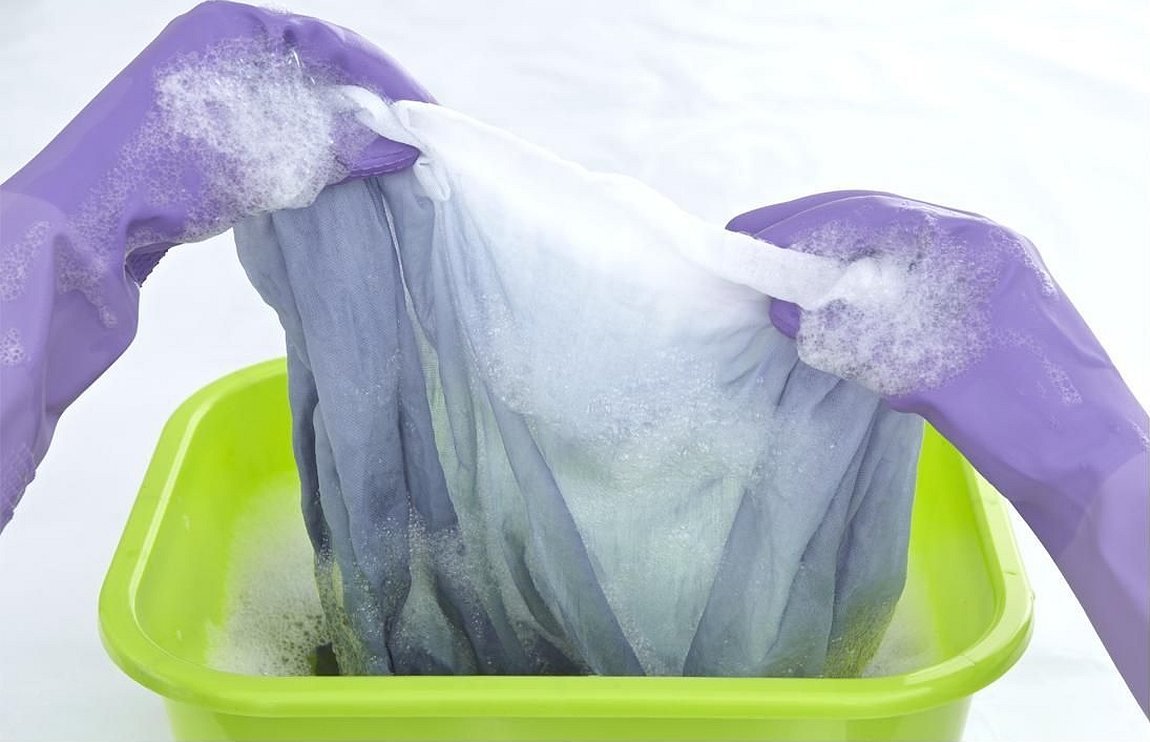
Important! Dresses on hangers should be straightened immediately so that they do not lose their shape.
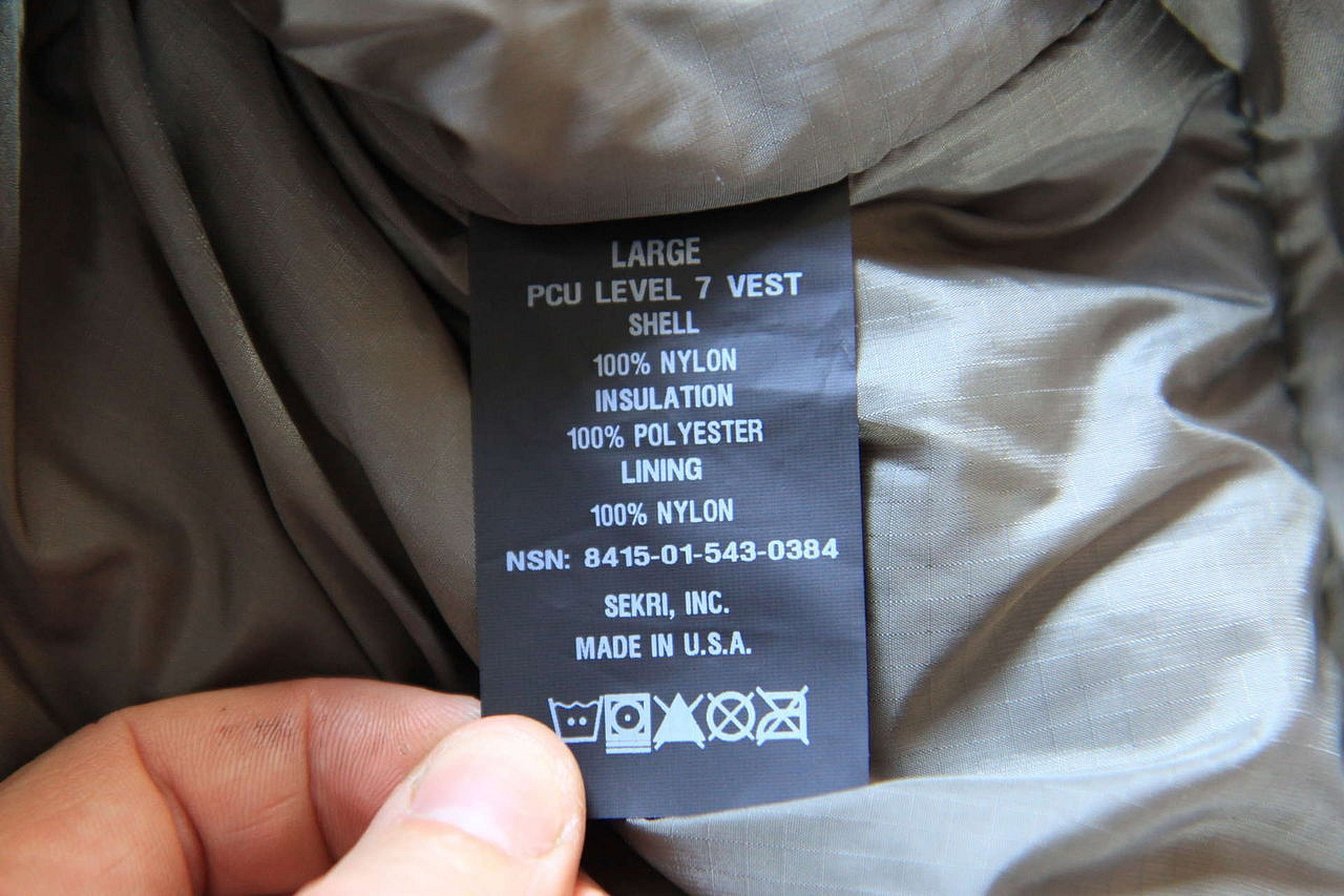
Advantages and disadvantages of the material
To decide whether it is worth buying a chiffon item, you need to consider all the advantages and disadvantages.
Advantages of the material:
- ease, repetition of movements;
- the fabric does not fade, so it will always look bright;
- Chiffon is draped to create beautiful folds;
- thinness is not a hindrance to strength, the fabric is resistant to tearing;
- natural material is pleasant to the body;
- there will be no allergy to the item;
- in natural chiffon the body does not heat up, it is well ventilated;
- dries quickly;
- Microorganisms do not multiply in the fabric.
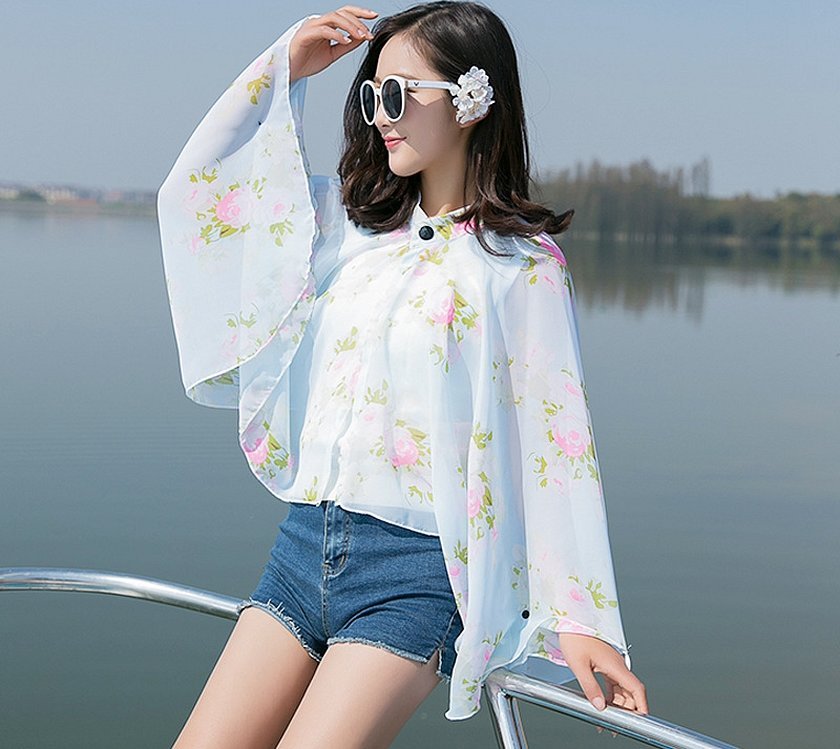
Disadvantages of the fabric:
- the item will not stretch;
- requires delicate care;
- the material is slippery.
Reviews
The reviews online are mostly positive:
Ekaterina, 67 years old, St. Petersburg
"I prefer to buy only natural chiffon. It is very pleasant to the body and looks beautiful. If you wear it carefully, it is easy to care for. But such things are not for everyday wear."
Victoria, 32 years old, Moscow
"I made a dress for myself from it. It's painstaking work. But it's not hot in the summer, and I look more feminine in it. Initially, there were problems with care. But you need to get the hang of it. Beauty requires sacrifice!"
Chiffon is a light but durable, beautiful fabric. The natural material is pleasant to the touch and comfortable to wear. It always requires delicate care and compliance with certain rules. Problems may arise when sewing items at home. Items made from it must be stored, ironed, and washed correctly.
*Prices are valid as of June 2019.




